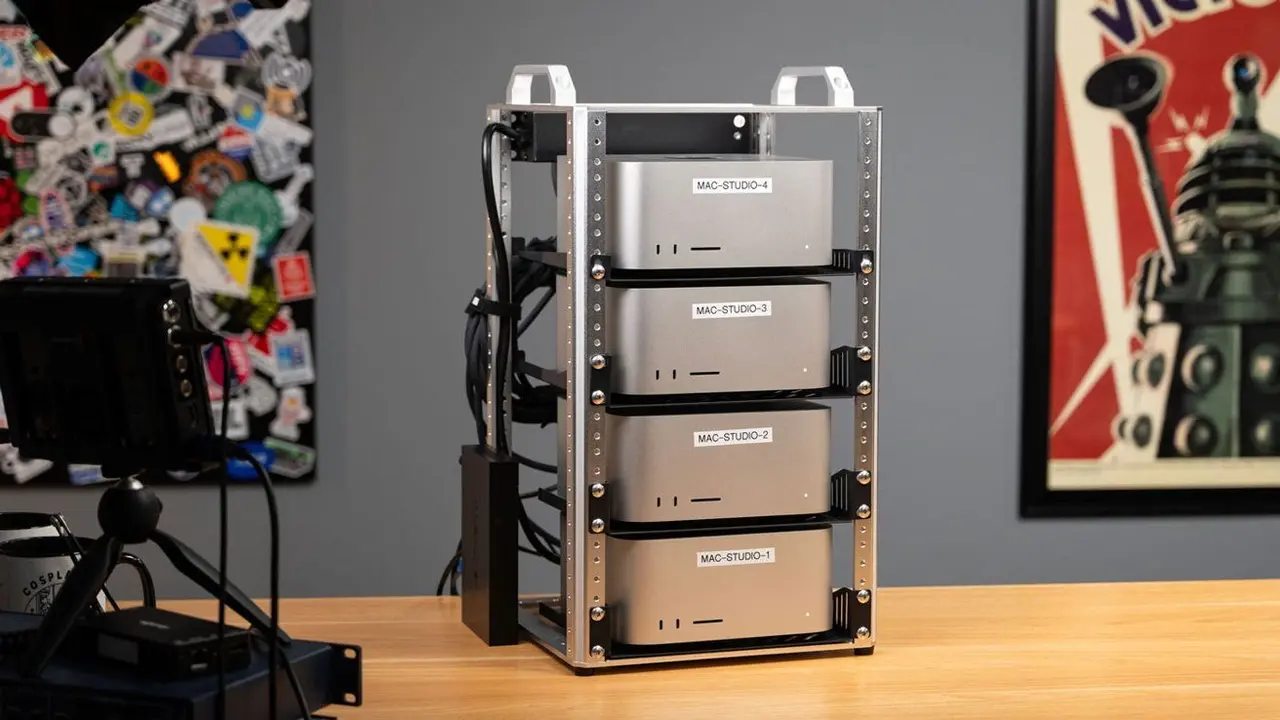Who-Fi: AI-Powered Wi-Fi Technology Raises Privacy Concerns with Advanced Tracking Capabilities
2 Sources
2 Sources
[1]
This New Tracking System Can Use Just Wi-Fi Signals to Identify You
It works on the principle of how human bodies distort Wi-Fi signals Who-Fi is a cutting-edge technology that leverages artificial intelligence (AI) to identify and track individuals without needing any visual input. It is an experimental technology which remains to be thoroughly tested in the real world. However, based on the research paper that mentions and documents its proof of concept, it can be used to turn any ordinary Wi-Fi signal into a biometric scanner that can not only track the movement and active position of an individual but also identify their unique biometric signature. According to a paper published in the online preprint journal arXiv, regular 2.4GHz Wi-Fi signals can be used to identify and track individuals, and play an important role in both identity authentication and surveillance. The technology also raises fresh concerns about digital privacy and security. Breaking the technology down, the Who-Fi system uses a combination of a Wi-Fi signal and a transformer-based neural network (also known as a large language model). This LLM analyses and understands something known as "channel state information" (CSI). It monitors the changes in Wi-Fi signal strength and phase as they bounce around a room and reflect off an individual's body. This can be understood as the signals transmitted by radar and sonar systems. So, whenever a human is near a Wi-Fi signal, the distortion in the signal's natural path creates a unique pattern. This pattern is said to be as accurate as other biometric signatures of humans, such as fingerprints, facial patterns, and the structure of the retina. The Who-Fi system can recognise this signature and attribute it to individuals. Once it has been trained on these signatures, the system can not only track the individual's movement, but also identify them even when they re-enter the network zone after a prolonged period. It can also capture body movement data and recognise sign language. The main advantage of the system is that it functions without any visual or auditory sensors, such as cameras and microphones. As per the study, the entire Who-Fi system requires a single-antenna transmitter and a three-antenna receiver, making deployment inexpensive. Coming to the efficiency of the system, the researchers found that despite the target being behind a wall, walking at a normal speed, Who-Fi achieved 95.5 percent precision. The accuracy is said not to change even if the individual changes clothes or wears a backpack. Notably, a single system is capable of identifying and tracking up to nine individuals simultaneously. Who-Fi also has high evasion, meaning it is very difficult to be detected by technologies that spot surveillance technologies. This is possible as the system does not use any special hardware, and there is no special emission pattern, infrared, radar, or visible spectrum light that can be detected. Additionally, Who-Fi conducts passive radio frequency (RF) sensing, making it easy to stay hidden.
[2]
Who-Fi is a New AI Powered Wi-Fi Tech to Track Individuals
Note that this is just an expirmental technology and isn't tested in the real world yet. The growth of artificial intelligence (AI) and innovation has posed many important and concerning questions of customers. A new technology called Wh0-Fi, powered by AI and Wi-Fi is now being talked about online. Note that this is just an expirmental technology and isn't tested in the real world yet. However, there are research papers on the proof of concept of this tech which suggests many things. In very simple words, this tech can be used to convert a regular Wi-Fi network into a high-end surveillance tech. What's interesting is that no additional sensors will be required. Read More - Lava Blaze Dragon 5G Launched Under Rs 10,000 in India With Who-Fi, the word privacy would certainly mean a little less. As per the research paper, this Wi-Fi tech would work on the 2.4 GHz spectrum band. This is a Wi-Fi band that's used commonly everywhere. Using the 2.4 GHz Wi-Fi signals, people can be easily tracked with this tech. Their movements, despite them being behind a wall, changing clothes, or doing anything else, would be easily and accurately trackable. Here's how it will work. The Wh0-Fi system will use the Wi-Fi signal and a transformer based neural network (also known as a large language model). This particular LLM understands something called "Channel State Information." The Wi-Fi signals in a room tend to bounce around a room and then reflect from a user's body. When the human is near the Wi-Fi signal, a distortion is created in the signal resulting in a unique pattern. Every human here would have a unique pattern that can be linked to them. Read More - Infinix Smart 10 Launched in India: Price and Specs It is just like a biometric of fingerprint, every human has a different print. Just like that, every human would have a unique pattern which the LLM would be able to understand and recognise. This will help the tech in understand what the user is doing without any camera or any additional sensor. A single-antenna transmitter and a three-antenna receiver would be able to do the job for the tech.
Share
Share
Copy Link
Researchers develop Who-Fi, an experimental AI-driven technology that uses Wi-Fi signals to identify and track individuals without cameras, sparking discussions on privacy and surveillance.
Who-Fi: A New Frontier in AI-Powered Tracking
Researchers have unveiled an experimental technology called Who-Fi, which combines artificial intelligence (AI) and Wi-Fi signals to identify and track individuals without the need for visual input. This cutting-edge system has the potential to transform ordinary Wi-Fi networks into sophisticated surveillance tools, raising fresh concerns about digital privacy and security
1
2
.
Source: Gadgets 360
How Who-Fi Works
Who-Fi operates on the principle that human bodies distort Wi-Fi signals in unique ways. The system utilizes a combination of 2.4GHz Wi-Fi signals and a transformer-based neural network, also known as a large language model (LLM). This AI analyzes "channel state information" (CSI), which involves monitoring changes in Wi-Fi signal strength and phase as they bounce around a room and reflect off individuals' bodies
1
.The distortion created by a person near a Wi-Fi signal produces a unique pattern, which the researchers claim is as accurate as other biometric signatures such as fingerprints or facial patterns. Once trained on these signatures, Who-Fi can:
- Track an individual's movement
- Identify people when they re-enter the network zone
- Capture body movement data
- Recognize sign language
1
Technical Specifications and Efficiency
The Who-Fi system requires minimal hardware:
- A single-antenna transmitter
- A three-antenna receiver
This simple setup makes deployment relatively inexpensive. In terms of efficiency, the researchers reported impressive results:
- 95.5% precision in tracking individuals, even when behind walls and walking at normal speeds
- Ability to identify and track up to nine individuals simultaneously
- Consistent accuracy regardless of clothing changes or the presence of items like backpacks
1
2
Related Stories
Privacy Implications and Evasion Difficulty
Who-Fi's capabilities raise significant privacy concerns. The technology is designed to be highly evasive, making it challenging to detect using conventional surveillance-spotting methods. Key features contributing to its stealth include:
- No special hardware requirements
- Absence of detectable emission patterns (infrared, radar, or visible spectrum light)
- Use of passive radio frequency (RF) sensing
1
These characteristics make Who-Fi particularly concerning from a privacy standpoint, as individuals may be unaware of its presence or operation.
Current Status and Future Implications
It's important to note that Who-Fi is currently an experimental technology that has not been thoroughly tested in real-world conditions. The research, published in the online preprint journal arXiv, presents a proof of concept that demonstrates the potential of this technology
1
2
.As AI and Wi-Fi technologies continue to advance, the development of systems like Who-Fi highlights the need for ongoing discussions about the balance between technological innovation and personal privacy. The ability to convert regular Wi-Fi networks into high-end surveillance tech without additional sensors could have far-reaching implications for both security applications and potential misuse
2
.While Who-Fi showcases the impressive capabilities of AI in signal processing and pattern recognition, it also underscores the importance of developing robust privacy protections and regulations to govern the use of such technologies in the future.
References
Summarized by
Navi
[2]
Related Stories
AIoT Revolution: Next-Gen Motion Recognition Enhances Smart Home Security and Efficiency
11 Feb 2025•Science and Research

AI-Powered Wi-Fi Technology Detects Depression in Older Adults with 87% Accuracy
05 Mar 2025•Health

GeoSpy: AI Tool Raises Privacy Concerns with Photo Geolocation Capabilities
25 Jan 2025•Technology

Recent Highlights
1
Google launches Gemini 3 Flash as default AI model, delivering speed with Pro-grade reasoning
Technology

2
OpenAI launches GPT Image 1.5 as AI image generator war with Google intensifies
Technology

3
OpenAI launches ChatGPT app store, opening doors for third-party developers to build AI-powered apps
Technology





